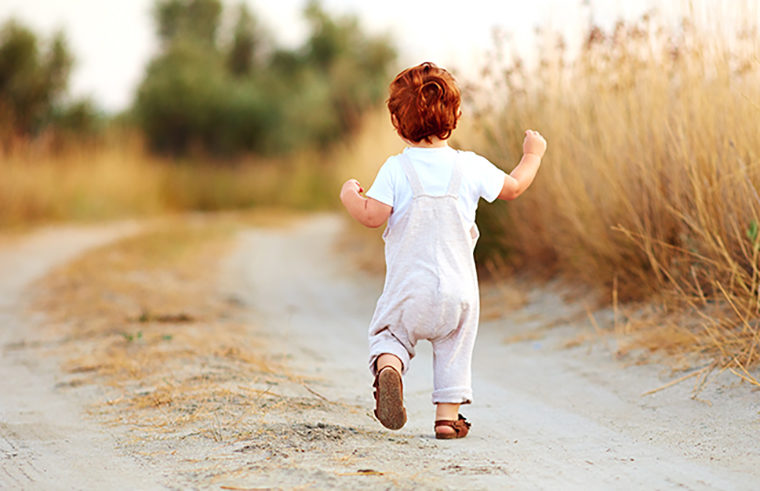If you’ve found yourself at your wit’s end at the park, screeching “come baaaaaack” to your rapidly disappearing toddler, you have our sympathy. You are in possession of a ‘bolter’, otherwise known as a ‘runner’.
“We’re going home now!”
Mum Hayley is in the same boat. She sent an SOS message to our favourite Mothercraft nurse, Chris Minogue, explaining her daughter was bolting in the other direction when they were out, and pleading for a fix.
Chris had some excellent ideas about dealing with running away, noting that keeping a handle on anger and frustration, and disciplining more gently can help reroute this pattern of behaviour into something less fraught.
“It’s defiant behaviour,” Chris starts. “She’s [often] running away because that gets attention. The most common one is in the park. You say, ‘We’re going home now’ … and they take off in the opposite direction! That is really common.”
‘Gentle consequences’
If your child is doing a runner, Chris suggests taking a deep breath and being more patient than you might think necessary.
“Again gentle, gentle behaviour,” she advises. “Wait for her to come back. I’ve got a lot of patience. I would stand there and quietly wait for her to come back.”
You might be going out of your mind a little with frustration at this point if you are this mum in the park, but Chris says hanging in there and implementing consequences calmly at this point is key.
“Once she comes back … give her a consequence. ‘We are going home now; tonight there’s no stories’ – so my consequence is not out of anger. I’m not shouting at her, but I’m saying if you do that behaviour, you’re not listening [to me]. That’s effectively what she’s doing.“

The skill of patience
Chris says parents are often under the pump, but slowing things down with your child, being patient and encouraging them to listen is what’s at the heart of this issue.
“If you’re not listening then this is the consequence, which could be that there are no stories tonight, or no In the Night Garden … whatever the thing is. And that becomes the consequence, and then you’ll see them choosing. You’ll see them choosing the behavior. ‘Should I listen? Should I not?’”
“It’s actually very difficult at this stage to get them to listen so you have to have a lot of patience. That skill of patience [is vital]. We’re a bit short on time so we’re a bit short on patience.”
Watch and wait
Chris also notes that while it’s great to get down on their level and go eye-to-eye with your child, it’s not going to work if they are halfway across the park.
She suggests not running after them – if that’s safe and age-appropriate – instead, try waiting for them to return and then keep things calm with her ‘gentle consequences’.
When you can’t watch and wait
Of course, there are times when patience is running low and the practical realities of being out and about with an unreliable toddler mean that you have to try a different approach.
Here’s what you can do to keep your ‘bolter’ safely by your side when you need to:
- Avoid outings to busy locations until your toddler has learnt to stay with you – this is not the time to attempt busy shopping centers, department stores or anywhere where a ‘fun’ game of hide and seek could end in panicked tears (yours).
- Take a stroller – while keeping your child safely strapped in and out of harm’s way won’t teach them to stay close to you, this is the best way to stay calm and in control when you have to venture out.
- Before leaving the house, and again before exiting the car, explain the rules to your child – be explicit about the behavior you are expecting from them and the consequences if they don’t follow the rules. Praise them when they follow the rules.
- If, despite your best efforts, they bolt away and don’t come back to you, retrieve them quickly. Stay calm – or as calm as you can be – and either strap them into the stroller if you have it handy, or hold their hand and explain that you won’t be letting go.
- Use a child harness – this is, of course, a personal choice and something that most people have a strong opinion on. Child harnesses can be a god-send for parents with an unrepentant ‘bolter’ or when they have multiple children to keep an eye on. Sure, a child harness doesn’t teach your child to stay close but it does keep them safe.
Conclusion:
Child harnesses can be a god-send for parents with an unrepentant ‘bolter’ or when they have multiple children to keep an eye on. Sure, a child harness doesn’t teach your child to stay close but it does keep them safe.






